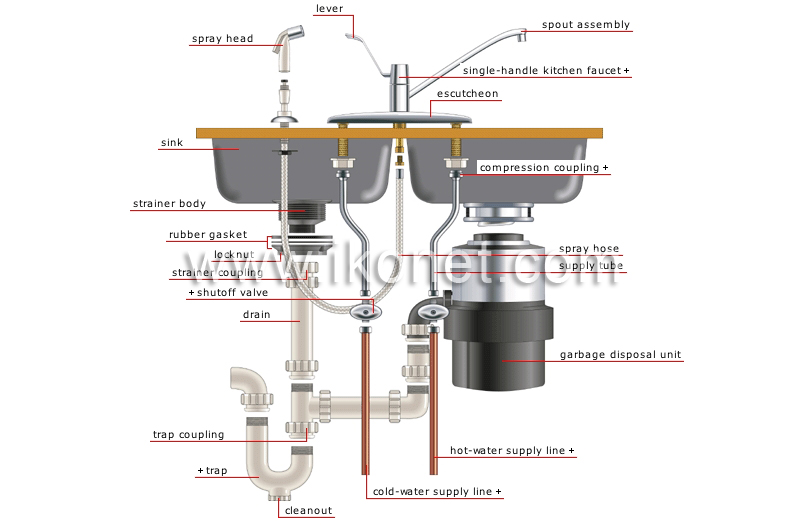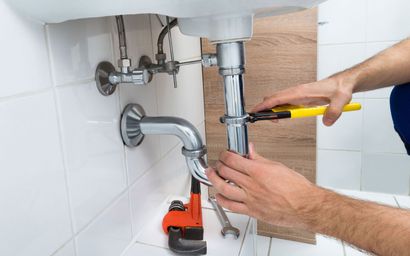The Core Elements of Your House's Plumbing System
The Core Elements of Your House's Plumbing System
Blog Article
We've noticed this article on Anatomy of a House: Understanding the Components directly below on the internet and decided it made sense to share it with you over here.

Comprehending exactly how your home's plumbing system works is vital for each property owner. From providing clean water for drinking, cooking, and bathing to securely getting rid of wastewater, a properly maintained plumbing system is important for your family's wellness and comfort. In this thorough guide, we'll discover the elaborate network that comprises your home's pipes and deal ideas on upkeep, upgrades, and managing common concerns.
Intro
Your home's pipes system is more than just a network of pipes; it's a complex system that guarantees you have accessibility to tidy water and reliable wastewater elimination. Understanding its elements and how they interact can assist you stop pricey repairs and make sure everything runs smoothly.
Basic Elements of a Plumbing System
Pipes and Tubes
At the heart of your plumbing system are the pipelines and tubing that lug water throughout your home. These can be made from numerous materials such as copper, PVC, or PEX, each with its benefits in terms of resilience and cost-effectiveness.
Components: Sinks, Toilets, Showers, etc.
Fixtures like sinks, commodes, showers, and bathtubs are where water is made use of in your home. Recognizing exactly how these fixtures attach to the pipes system helps in identifying troubles and planning upgrades.
Valves and Shut-off Factors
Valves control the circulation of water in your plumbing system. Shut-off shutoffs are essential during emergencies or when you require to make fixings, enabling you to separate parts of the system without disrupting water circulation to the entire residence.
Water System
Key Water Line
The primary water line attaches your home to the community supply of water or an exclusive well. It's where water enters your home and is distributed to numerous fixtures.
Water Meter and Pressure Regulator
The water meter actions your water use, while a pressure regulatory authority ensures that water streams at a risk-free stress throughout your home's plumbing system, protecting against damage to pipes and components.
Cold Water vs. Warm water Lines
Understanding the distinction in between cold water lines, which supply water directly from the primary, and warm water lines, which carry heated water from the water heater, aids in fixing and planning for upgrades.
Water drainage System
Drain Pipes and Traps
Drain pipes lug wastewater away from sinks, showers, and bathrooms to the drain or septic system. Traps stop sewage system gases from entering your home and likewise catch particles that could cause clogs.
Ventilation Pipes
Air flow pipes enable air right into the water drainage system, avoiding suction that might slow down drain and cause traps to empty. Appropriate ventilation is crucial for maintaining the stability of your pipes system.
Relevance of Correct Water Drainage
Ensuring proper drainage avoids back-ups and water damages. Consistently cleansing drains pipes and keeping catches can stop expensive repair work and extend the life of your plumbing system.
Water Furnace
Sorts Of Water Heaters
Water heaters can be tankless or traditional tank-style. Tankless heating systems warmth water on demand, while tanks save warmed water for instant usage.
Exactly How Water Heaters Connect to the Pipes System
Comprehending how water heaters attach to both the cold water supply and hot water circulation lines assists in diagnosing concerns like not enough hot water or leakages.
Upkeep Tips for Water Heaters
Regularly purging your water heater to remove debris, checking the temperature level settings, and evaluating for leakages can extend its life-span and enhance energy performance.
Typical Pipes Issues
Leaks and Their Causes
Leaks can occur as a result of aging pipes, loose fittings, or high water pressure. Attending to leakages quickly protects against water damage and mold and mildew growth.
Clogs and Obstructions
Blockages in drains and toilets are often caused by purging non-flushable products or a buildup of oil and hair. Using drainpipe displays and bearing in mind what goes down your drains pipes can avoid obstructions.
Indications of Pipes Issues to Expect
Low water stress, sluggish drains pipes, foul odors, or uncommonly high water costs are indicators of prospective pipes problems that must be dealt with without delay.
Plumbing Upkeep Tips
Regular Examinations and Checks
Schedule yearly pipes evaluations to capture concerns early. Search for signs of leakages, rust, or mineral buildup in faucets and showerheads.
Do It Yourself Maintenance Tasks
Simple tasks like cleaning faucet aerators, checking for toilet leaks using color tablets, or shielding exposed pipelines in cool climates can avoid significant pipes concerns.
When to Call an Expert Plumber
Know when a plumbing problem needs professional expertise. Trying intricate repair work without appropriate expertise can lead to even more damage and higher repair work expenses.
Updating Your Pipes System
Factors for Updating
Updating to water-efficient components or changing old pipes can boost water top quality, reduce water bills, and increase the value of your home.
Modern Pipes Technologies and Their Advantages
Explore technologies like smart leak detectors, water-saving toilets, and energy-efficient hot water heater that can conserve money and minimize ecological impact.
Cost Considerations and ROI
Calculate the upfront expenses versus long-term financial savings when thinking about pipes upgrades. Lots of upgrades pay for themselves via decreased energy expenses and less repairs.
Ecological Impact and Conservation
Water-Saving Fixtures and Appliances
Installing low-flow faucets, showerheads, and toilets can considerably decrease water usage without compromising performance.
Tips for Minimizing Water Use
Easy practices like taking care of leaks immediately, taking much shorter showers, and running complete loads of laundry and dishes can conserve water and reduced your utility bills.
Eco-Friendly Plumbing Options
Take into consideration sustainable plumbing products like bamboo for floor covering, which is durable and green, or recycled glass for kitchen counters.
Emergency situation Preparedness
Steps to Take During a Pipes Emergency situation
Know where your shut-off valves are located and exactly how to shut off the supply of water in case of a ruptured pipe or major leakage.
Significance of Having Emergency Get In Touches With Helpful
Maintain contact details for neighborhood plumbing technicians or emergency services conveniently offered for quick response throughout a pipes dilemma.
DIY Emergency Situation Fixes (When Appropriate).
Short-term fixes like using duct tape to spot a leaking pipeline or putting a container under a leaking tap can decrease damages up until an expert plumbing gets here.
Final thought.
Understanding the anatomy of your home's pipes system equips you to maintain it properly, conserving money and time on repair work. By following normal maintenance routines and remaining educated regarding modern pipes modern technologies, you can ensure your plumbing system runs efficiently for several years ahead.
Exploring Your Homes Plumbing Anatomy
Water Supply System
Main Water Line: This is where water enters your home from the municipal supply or a private well.
Water Meter: Typically located near where the main water line enters the property, it measures the amount of water used.
Shutoff Valve: It s crucial to know where this is in case of emergencies. It allows you to turn off the water supply to the entire house.
Pipes and Fittings: These distribute water throughout your home. Materials can include copper, PVC, or PEX.
Drain-Waste-Vent (DWV) System
Drains: Located in sinks, showers, and tubs, these carry wastewater away.
Traps: U-shaped pipes under sinks that hold standing water, blocking sewer gases from entering the home.
Vents: Pipes that lead from the DWV system to the outside, preventing vacuum formation and allowing gases to escape.
Sewer Line: Carries all wastewater from the home to the municipal sewer system or a septic tank.
Fixtures and Appliances
Sinks, Toilets, and Showers
Dishwashers and Washing Machines
Water Heaters
Maintenance Tips
Regularly check for leaks in exposed pipes and around fixtures.
Inspect the water heater annually for signs of wear.
Clean drains and traps to prevent clogs and odors.
Know how to shut off water to individual fixtures.
When to Call a Professional
Major leaks or burst pipes
Installation of new pipes or fixtures
Septic tank issues
Remodeling projects that involve plumbing changes
Conclusion
Understanding the anatomy of your home's plumbing is key to maintaining a functional and efficient system. Regular checks and knowing when to call in the experts can save you time, money, and stress.
https://www.mavyn.com/blog/exploring-your-homes-plumbing-anatomy

Exploring Your Homes Plumbing Anatomy
Water Supply System
Drain-Waste-Vent (DWV) System
Fixtures and Appliances
Maintenance Tips
When to Call a Professional
Conclusion
Understanding the anatomy of your home's plumbing is key to maintaining a functional and efficient system. Regular checks and knowing when to call in the experts can save you time, money, and stress.
https://www.mavyn.com/blog/exploring-your-homes-plumbing-anatomy
I am very excited about The Inner Workings of Your Home's Plumbing and I am assuming you enjoyed the entire blog entry. Do you know about somebody else who is occupied with the topic? Please feel free to share it. I love reading our article about .
Get Estimate Report this page